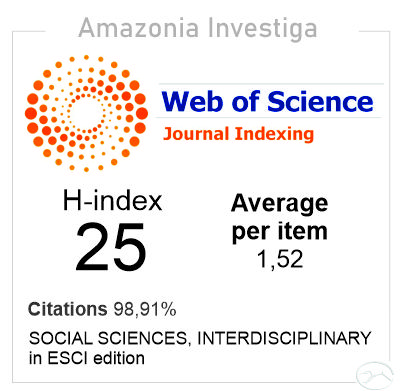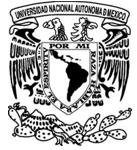The gardens and architecture of the imperial burial complexes of Vietnam as a result of the influence of Chinese culture on the countries of Woutheast Asia
Mots-clés :
Vietnam, China, gardens, parks, architecture, mausoleum, globalization.Résumé
The article is devoted to the issues of borrowing and identity of the Vietnamese garden culture on the example of the burial complexes of China and Vietnam. In all countries of Southeast Asia and Indochina, where the traditions of Chinese gardening were perceived, the gardens of the imperial funerary complexes demonstrated the degree of popularity of the deceased emperor, the economic condition of the empire, modeled the emperor's “life” in the afterlife with maximum use of Feng Shui planning principles. All planning aspects prescribed by this doctrine were observed in Vietnamese burial complexes, but with a certain adjustment in accordance with their own aesthetic views, functional preferences and perceptions of expediency. The field surveys carried out by the authors of the burial complexes of Vietnam and China in the cities of Hue, Shenyang and the outskirts of Beijing served as sources for the study. Globalization trends in the field of horticultural culture from the period of the Chinese conquests of Vietnam to the period of the Nguyen dynasty, when the policy of the French administration was aimed at breaking cultural and economic ties between Vietnam and China, are considered. It was revealed that the layout and architecture of the garden and park ensembles of the imperial mausoleum parks were influenced by all three basic philosophical and religious teachings of China - Confucianism, Taoism and Buddhism. These teachings manifested themselves in an orderly layout with axes and symmetrical elements (Confucianism), compliance with the laws of Chinese geomancy Feng Shui (Taoism) and the unity of life and posthumous space (Buddhism). The gardens of the mausoleums in Vietnam were used for recreation and entertainment of the ruling elite, followed by the burial of the emperor and his family.
Téléchargements
Références
??ng Thái Hoàng, Nguy?n V?n ??nh, V? Th? Ng?c Anh, ?? Tr?ng Chung, L??ng Th? Hi?n, Nguy?n H?ng H??ng, Tr??ng Ng?c Lân, Nguy?n M?nh Trí. V?n hoá và ki?n trúc ph??ng ?ông. Nhà xu?t b?n xây d?ng. Hà N?i, 2010. Trang 243. (Dang Thai Hoang, Nguyen Van Dinh, Vu Thi Ngoc Anh, Do Trong Chung, Luong Thi Hien, Nguyen Hong Huong, Truong Ngoc Lan, Nguyen Manh Tri (2010). Eastern culture and architecture. Hanoi: Construction publisher)
Golosova, E.V. (2011). China and the landscape art of Eurasia. LAP LAMBERT Academic Publishing GmbH & Co.KG.
Golosova, E.V. (2017). Gardens of the Rising Sun. Landscape art of Japan. Moscow: Monuments of historical thought. Hu Dongchu (1991). The way of the virtuous: The infl uence of art and philosophy on Chinese garden design. Beijing: Forein languages printing house.
Lokshin G.M. (2013). RAS RAS IFES Vietnamese-Chinese relations: geography terany and common sense. Southeast Asia: Current Problems of Development, 21, 77-100. ISSN: 2072-8271
L??ng Kim Thành. Vua chúa tri?u Nguy?n chín ??i chúa m??i ba ??i vua. Nhà xu?t b?n Th? Gi?i. Hà N?i, 2012. Trang 151.( Luong Kim Thanh (2012). King of the Nguyen dynasty. Hanoi:World publishing house.)
Mai Kh?c ?ng. Khiêm l?ng và vua T? ??c. Nhà xu?t b?n ?à N?ng. ?à N?ng, 2013. Trang 25.( Mai Khac Ung (2013). Khiem tomb and the king Tu Duc. Da Nang: Da Nang publishing house.)
Mai Kh?c ?ng. L?ng c?a hoàng ?? Minh M?ng. Nhà xu?t b?n ?à N?ng. ?à N?ng, 2016. Trang 95 (Mai Khac Ung (2016). Tomb of emperor Minh Mang. Da Nang: Da Nang publishing house.)
Mkhitaryan, S. A. (1983). The history of Vietnam. Moscow: Science.
Nguy?n ?ình Toàn. Ki?n trúc Vi?t Nam qua các th?i k?. Nhà xu?t b?n xây d?ng. Hà N?i, 2010. Trang 23. (Nguyen Dinh Toan (2010). Vietnamese architecture through periods. Hanoi: Construction publisher.)
Nguy?n Ng?c Tùng, Nguy?n Th? Minh Xuân. Giáo trình l?ch s? ki?n trúc vi?t nam. Nhà xu?t b?n ??i h?c Hu?. Hu?, 2016. Trang 13 ( Nguyen Ngoc Tung, Nguyen Thi Minh Xuan (2016). History of Vietnamese architecture. Hue: Hue university publishing house.)
Nguy?n Phi Hoanh. L??c s? m? thu?t Vi?t Nam. Nhà xu?t b?n khoa h?c xã h?i. Hà N?i, 1970. Trang 125. (Nguyen Phi Hoanh (1970). Vietnamese art history. Hanoi: Social science publishing house.)
Phan Thu?n An. Ki?n trúc c? ?ô Hu?. Nhà xu?t b?n ?à N?ng. Trang 10-113.( Phan Thuan An (2010). Hue ancient architecture. Da Nang: Da Nang publishing house.)
Phan Thu?n An. L?ng t?m Hu? m?t k? quan. Nhà xu?t b?n ?à N?ng. ?à N?ng, 2015. Trang 35. (Phan Thuan An (2015). The royal tomb of Hue is a wonder. Da Nang: Da Nang publishing house.)
Tr?n Lâm Bi?n. Di?n bi?n ki?n trúc truy?n th?ng vi?t nam vùng châu th? sông H?ng. Nhà xu?t b?n H?ng ??c. Hà N?i, 2017. Trang 38. (Tran Lam Bien (2017). Transformation of traditional Vietnamese architecture in the Red river delta region. Hanoi: Hong Duc publishing house.) Windridge, C. (2002). Tong Sing The Chinese Book of Wisdom. Singapore: Kyle Cathie Limited.

































































.gif)






